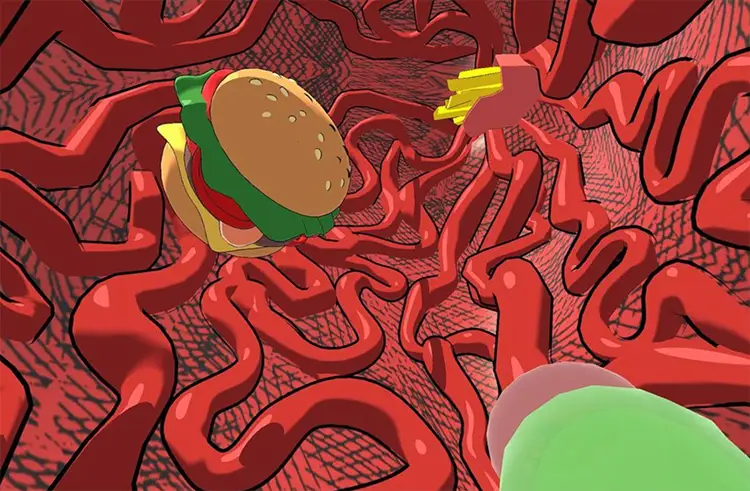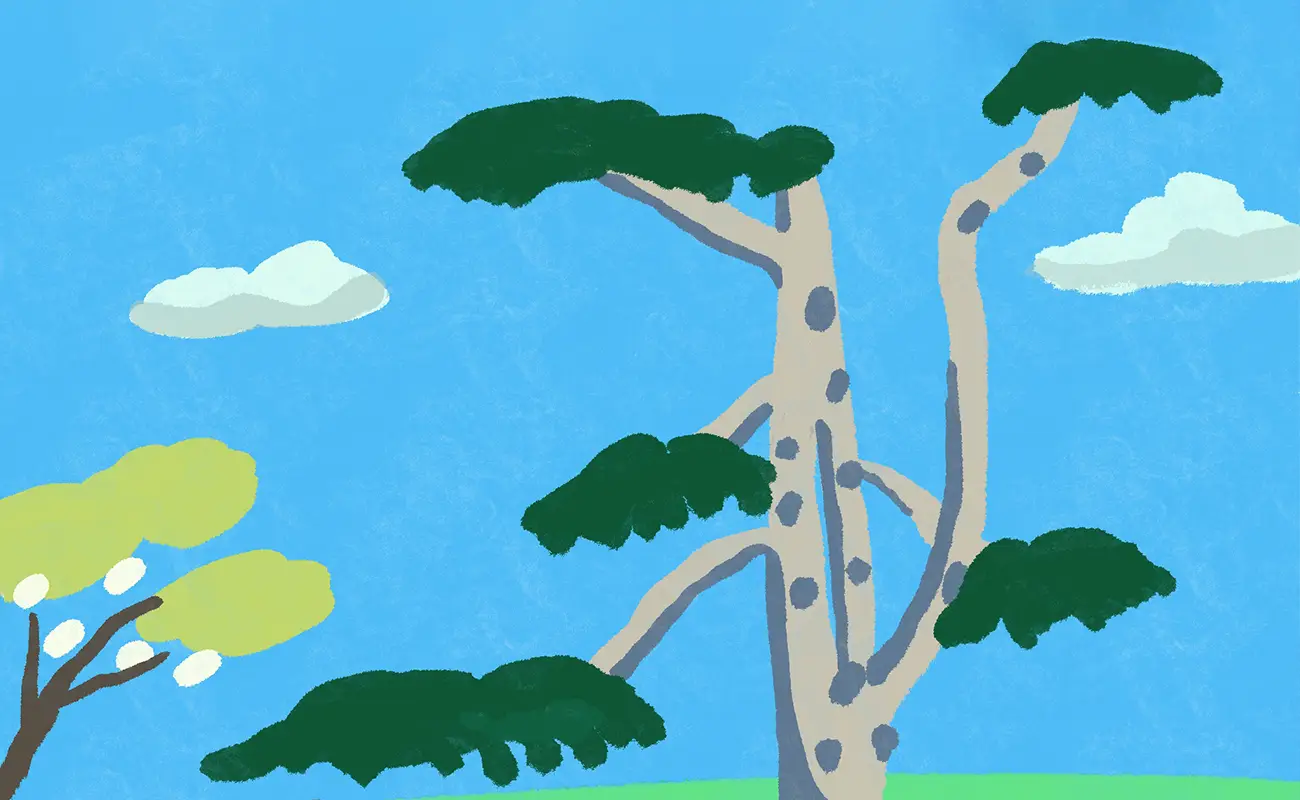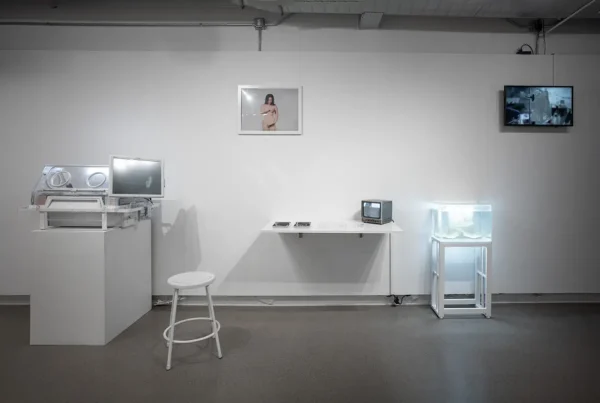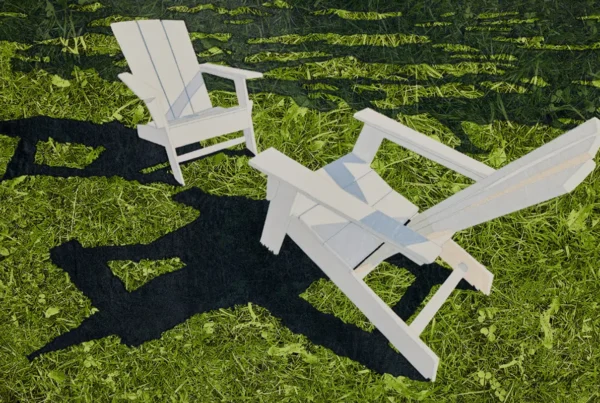“Art feels like using a powerful and universal language that allows me to communicate in ways that words never could tell.”
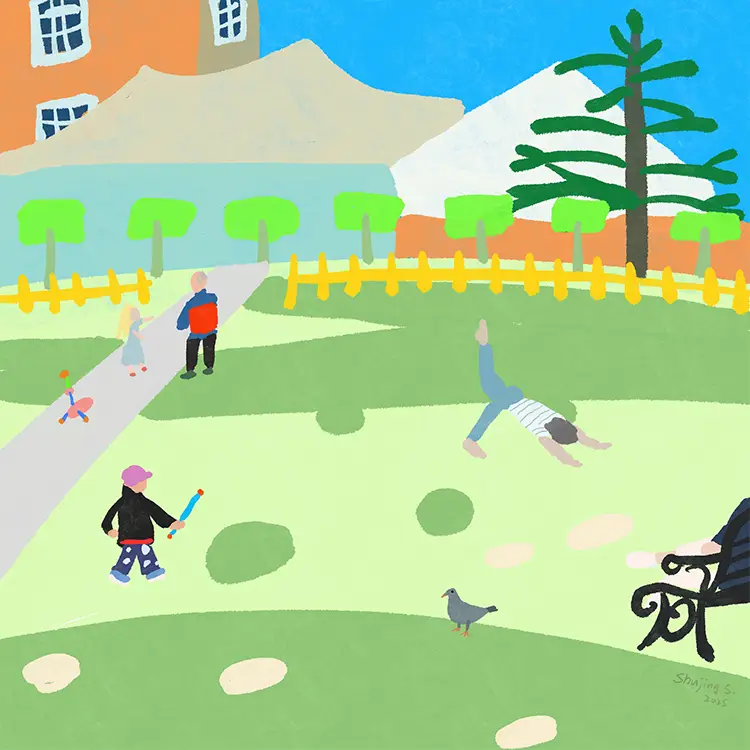
Interwoven Journeys: A Cross-Cultural Exploration of Form and Feeling
When we encounter the work of Shujing Shen, what strikes us first is not the medium, but the mood. Born in China, shaped by years in New Zealand, and now based in the United Kingdom, Shen brings a layered sensitivity to her mixed-media practice. From digital painting and Riso printing to fabric sculpture and XR, each medium acts not just as a tool, but as an emotional register. Her training—first at the Royal College of Art, then in Virtual Reality at the London College of Communication—gives her a fluency in both analog and immersive forms. But what resonates most is her ability to translate a life lived across cultures into a visual language that feels neither foreign nor familiar, but deeply felt.
This cross-cultural elasticity is evident in works like In the Park, a digital painting that resists easy categorization. We sense the rhythm of Tai Chi in its composition—flowing, intuitive, and quietly grounded. At the same time, there’s an emotional remove, a dreamlike gaze that reflects Shen’s position as both participant and observer in Western urban life. These images feel remembered more than rendered—imbued with what we might call “emotional hindsight.” They ask us not just to look, but to linger. What seems like simplicity reveals itself as an invitation: to slow down, to feel more, to listen to the silence within the scene.
Shen’s early love of drawing, which first surfaced in childhood experiments with walls and found objects, echoes throughout her work today. Even when working with advanced XR software, that same intuitive, tactile impulse remains. Her creative evolution—from a student of finance to a sculptor of sensation—was less a pivot than a gradual return. Immersing herself in London’s creative communities, Shen found herself leaning into messiness, instinct, and process over perfection. Her trajectory reminds us that art is not only about discipline or training, but about tuning into emotion, memory, and the often-fragmented way we experience the world.
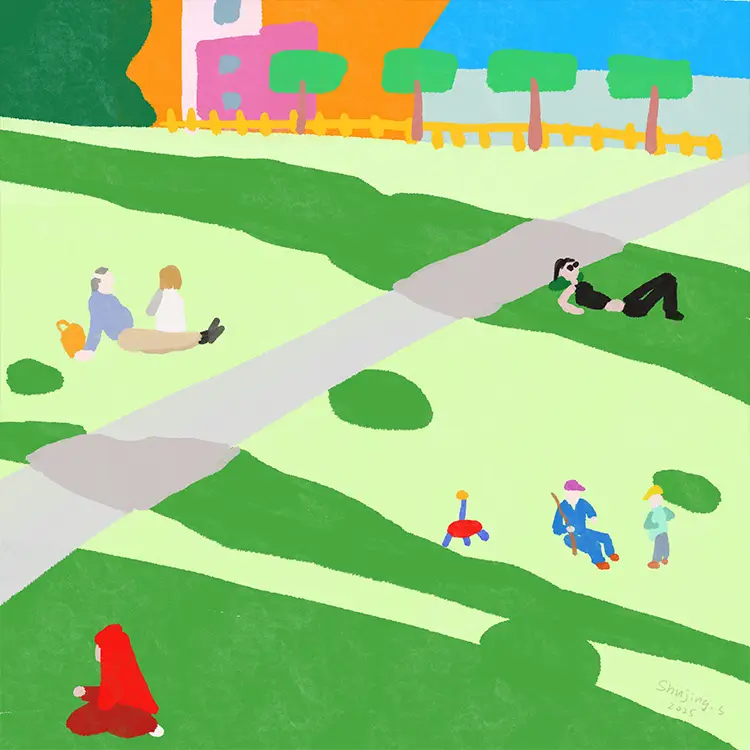
Shujing Shen: Drawing Emotion Through Color and Curiosity
At the core of Shen’s visual vocabulary is a rare blend of playfulness and precision. We’re struck by how confidently she leans into bold color, irregular form, and the unfiltered logic of childhood. Her images don’t aim to decode the world, but to feel through it. With each brushstroke or soft-edged figure, she traces a memory or mood just at the edge of articulation. What results is work that feels open, vulnerable, and refreshingly free from pretension.
In In the Park, this emotional openness takes the shape of gentle park scenes—figures resting, walking, breathing. We might read these as moments of nothingness, but they hum with something deeper. There’s a quiet reverence in Shen’s compositions that recalls the teachings of David Hockney: that beauty lives in the ordinary, if only we choose to see it. Her work doesn’t force us to feel—it simply holds space for feeling, allowing our own associations to surface. The simplified forms, rhythmic spacing, and soft transitions of color are not just stylistic choices; they are emotional cues.
We also see the influence of artists like David Shrigley and Tara Booth, whose practices prioritize sincerity, humor, and awkwardness over polish. Shen, too, resists the temptation to over-explain. Instead, her work gestures toward emotional states—some joyful, others uncertain—and lets imperfection live comfortably within them. In this way, her visual storytelling speaks less through narrative and more through empathy. The result is not just a picture, but a felt experience: vibrant, introspective, and sometimes a little raw.
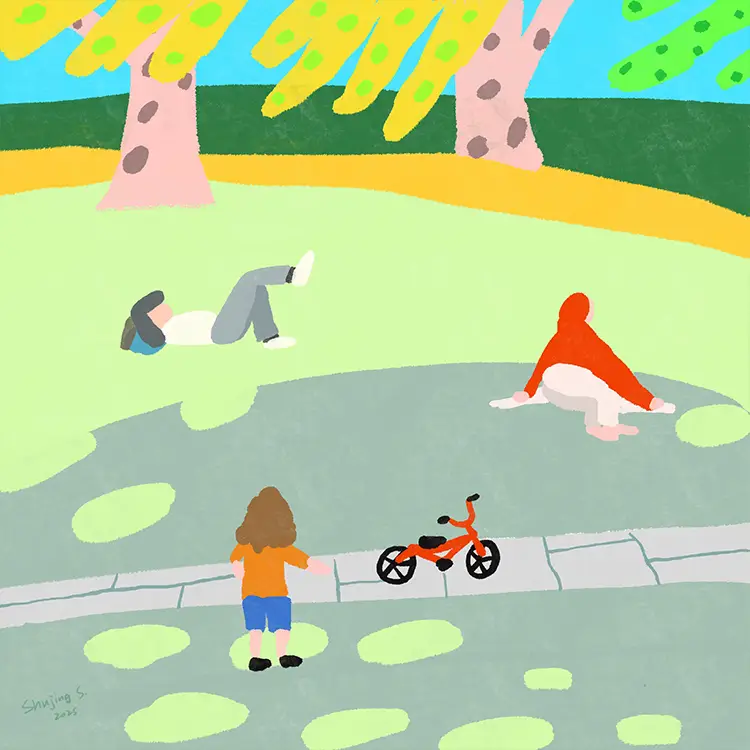
The Art of Stillness: Creating Through Exhaustion and Empathy
Nowhere is Shen’s emotional acuity more palpable than in her sculptural piece Resting Chair. We first encountered it as a sketch—raw, almost automatic, born from a moment of total exhaustion. That it later became a three-dimensional object feels inevitable in retrospect. Composed of recycled materials—an old dress, yellow thread, a discarded heating panel—the sculpture slumps into itself. It doesn’t function as a chair, but as a symbol of what it means to need rest, to embody fatigue.
As viewers, we’re not asked to admire the object, but to feel with it. There’s something unflinchingly honest about the way it fails to hold itself up. It reminds us of days when our own bodies feel similarly weighted, similarly soft. Shen doesn’t sanitize this vulnerability—she builds it into the work’s very form. And by doing so, she transforms personal depletion into a shared experience of recognition. The piece doesn’t speak loudly, but it speaks deeply. It whispers, “You’re allowed to stop.”
Resting Chair also showcases Shen’s thoughtful material use—her belief that even forgotten or broken things carry emotional resonance. Nothing in her work is arbitrary. Every thread and texture holds a bit of life, of memory, of care. This layered approach allows the sculpture to act as more than an art object; it becomes a kind of emotional surrogate. In a world that often prizes productivity and polish, Resting Chair offers us something far more radical: permission to be undone.
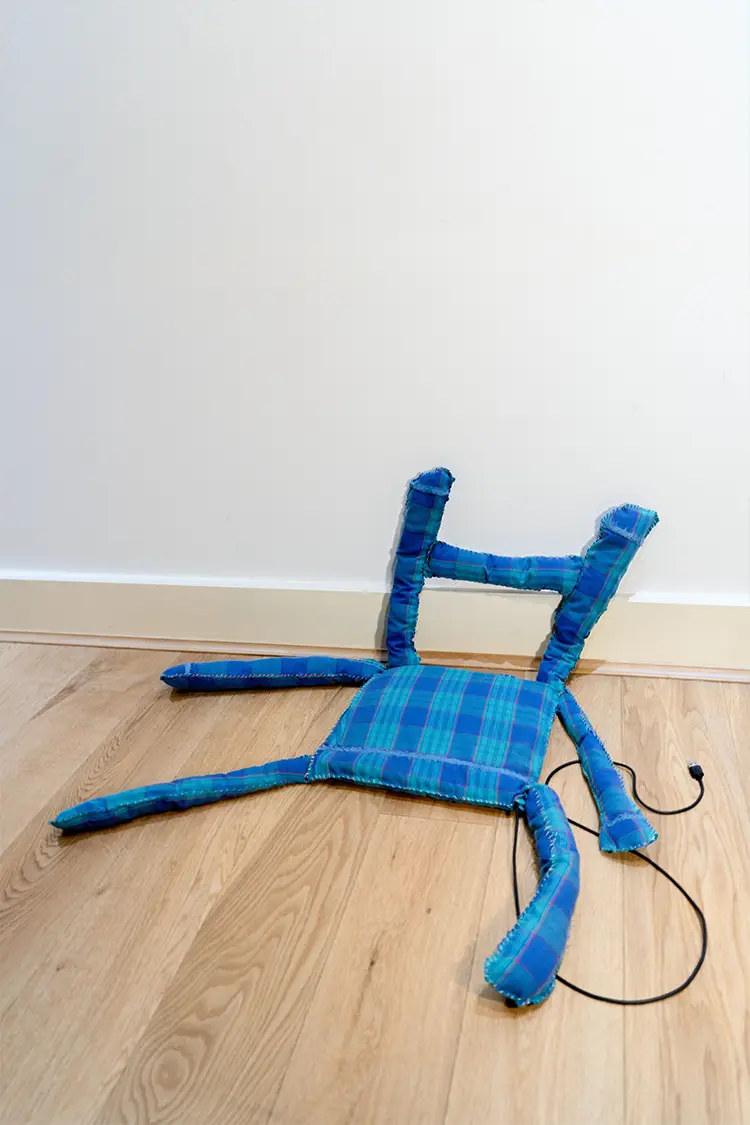
Embodied Metaphor: Bulimia (2023)
With Bulimia, Shen takes us somewhere entirely different—deep inside the human body, where surreal forms and emotional complexity collide. This XR project marks a tonal departure from her softer works, but it retains the same deep emotional clarity that defines her practice. Set inside a stylized digestive system, Bulimia becomes an embodied metaphor for mental health—particularly the cyclical push and pull of eating disorders.
Here, Shen’s immersive storytelling flourishes. Donning a headset, we don’t simply witness a narrative—we enter it. We drift through uncanny landscapes filled with writhing flora, pulsing textures, and tactile discomfort. The environment is unsettling, even grotesque at times, but always tender in its emotional aim. It avoids the coldness of clinical representation and instead carves out a space for empathy, reflection, and complexity.
What we admire most is how Shen maintains her sense of care even within disquieting subject matter. Rather than depict suffering from a distance, she creates an allegorical space that lets viewers feel the experience from within. Bulimia does not simplify or moralize; it makes room for contradiction, pain, and quiet recognition. This is Shen’s hallmark—regardless of medium, she creates emotional architecture in which we might find ourselves, however uncomfortably.
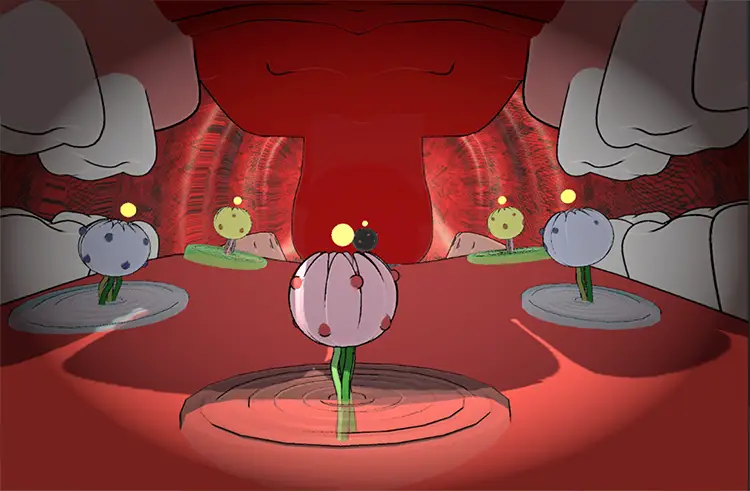
Shujing Shen: Sketching Memory into Immersive Space
Shen’s ongoing exploration of extended reality opens a new and compelling chapter in her practice. Her upcoming VR project—a hand-drawn, first-person journey through childhood memories—has already begun to reshape our understanding of what immersive art can be. It doesn’t rely on spectacle or technical dazzle. Instead, it builds an emotional architecture, grounded in the soft textures of memory. Every environment, every object—from a rabbit-shaped puzzle mat to a plastic toy fish—serves as a portal to another emotional register.
What sets this project apart is its refusal to organize memory as linear story. Instead, Shen allows the viewer to wander through sensation, to get lost inside textures that feel more like dreams than diaries. The pencil-drawn aesthetic is a stroke of genius—it mirrors the haziness of our own recollections, where detail is often less important than emotional weight. Here, memory isn’t something we observe—it’s something we inhabit.
We’re reminded that Shen doesn’t view technology as the endpoint, but as an extension of her emotional toolkit. Whether working in clay, cloth, or VR, she is always asking: How does this feel? And more importantly: Can others feel it too? This immersive project offers not just access to Shen’s personal past, but a shared emotional space, where each of us might recognize some version of our own story. It is art as invitation—quiet, textured, and profoundly human.
